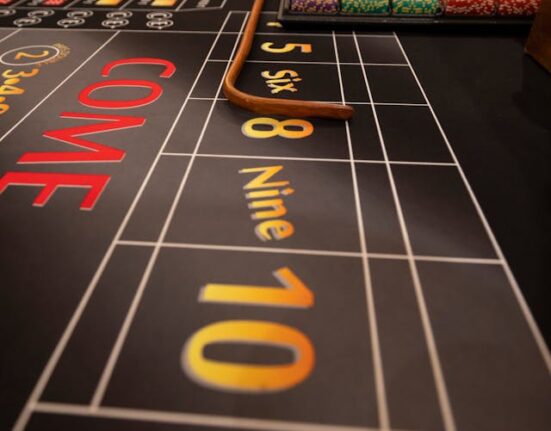The casino environment
Commercial casinos in the United States had a total revenue of at least $30 Billion between 2005 and 2008.1 This was before the current economic downturn. Due to the economic downturn in America, US casino construction has slowed to a crawl and operators have shifted their attention to cost reductions for existing facilities.
Section 179(D), Tax Provisions
Casino operators are increasingly taking advantage of the EPAct IRC Section 179(D), commercial building energy efficiency tax provisions. These provisions have been extended up to 2013. EPAct tax deductions can be claimed for qualifying energy savings in lighting, HVAC (heating, ventilation and air conditioning), or building envelope. The building envelope is made up of the foundation, walls, roof and windows of the building. These elements control the flow and distribution of energy within the building.
The Nature of Casino Properties
Many commercial casinos include hotel resorts that offer attractive services to their corporate and family clients. Because of their large gaming floors and hotel occupancy rooms, meeting halls and parking garages, casinos are well-suited for EPAct. These features often consume large amounts of space. The EPAct benefit can be as high as 60 cents per square feet for each of the three mentioned measures. The smallest commercial casinos can be found at around 50,000 square feet, while the majority of American casinos span more than 100,000 square feet. MGM Grand, located on the Las Vegas Strip, is the largest of all the casinos. It covers almost 2 million square feet. The most popular Section 179 building category is the hotel industry. (See “Hotels and Motels Most Favoured Energy Policy Act Tax Properties”
Commonly, commercial casinos are thought to be located in New Jersey and Nevada. Although these states have the highest commercial casino revenues, there is still 12 states that have commercial casinos. The other states with commercial casinos are Colorado, Illinois and Indiana, Iowa, Louisiana. Mississippi, Missouri, Missouri, Pennsylvania, South Dakota, Missouri, Mississippi, Missouri, Missouri, Pennsylvania and South Dakota. The American Gaming Association has made public some of its commitments to energy conservation. Boyd Gaming Corporation, Harrah’s Entertainment, Inc., MGM Mirage are the casinos that were reported. Their projects include significant energy savings through cogeneration, ERV (energy recovery ventilation), more efficient HVAC units and replacing incandescent lighting with energy-efficient lightings. They also have windows equipped with energy-efficient day lighting systems.
Casinos and especially casino hotels are the most preferred property category to receive the Section 179D tax deduction. This rule requires a minimum 25% reduction in watts per square foot compared to the 2001 ASHRAE building energy code standard. A 40% reduction in wattage per square foot is sufficient to qualify for full tax deduction. This is in comparison with the ASHRAE 2001 standard. The ASHRAE 2004 hotel/motel code standard requires a 40% reduction in wattage. This means that any hotel/motel lighting installation that meets this requirement will automatically be eligible for the maximum EPAct tax deduction.
Occupancy rooms
The Section 179D tax provisions apply to all other categories of buildings. They require compliance with the bilevel switching requirement. This comparison uses wired lighting rather than plug-in. The advantage of casino hotel occupancy rooms is that they use plug-in lighting. These rooms also function as motel and hotel spaces and are exempt from the tax bilevel switching requirement. Because occupant rooms are often the largest spaces in casino hotels, casinos can usually use energy-efficient lighting to generate large EPAct tax deductions.
B The House Spaces
Many casinos have large kitchens, storage and laundry areas that were previously lit with T-12 fluorescent light. These lighting fixtures are so inefficient in comparison to modern lighting products, it will be illegal to produce in the United States starting July 1, 2010.4. The cost of replacing inefficient bulbs will rise once the manufacturing of the older generation lighting products is stopped. To put it simply, casinos should act now to replace these lighting fixtures in order to save energy and reduce lamp replacement costs. These legally required product changes can be addressed by the EPAct lighting tax incentive
Banquet Rooms, Ball Rooms and Restaurants
Designer lighting has been used in these areas for casinos. It is often energy-inefficient and very costly to replace. High ceilings make it difficult to replace bulbs and lamps. To do so, expensive mobile hydraulic platform equipment needs to be rented or bought. New lighting products, including light emitting diode products (LED), use less energy and last a longer time. They are being replaced. Combining large energy cost reductions, operating costs reductions, utility rebates, and EPAct tax deductions can significantly improve the economic return on these more expensive lighting upgrades.
Garages
Parking garages can be found in many casinos. These parking spaces are ideal for generating large tax deductions and reducing energy costs. The IRS declared that parking garages were a property type that can be used for the EPAct tax deductions in Notice 2008-40, which was issued March 7, 2008. Parking garages are exempt from the tax bilevel switching requirement. See the September 2008 International Parking Institute article on parking garages and EPAct lighting deduction tax options.5
Gaming Floors
Slot machines are the largest energy consumers on hotel gaming floors. These machines were the first to adopt fluorescent technology. However, they still require replacement 3 times per year due to their 24/7 operation. Casino owners are switching to LED technology for their slot machines due to high labor costs. While they may have higher upfront costs, LED’s are more energy efficient and have a longer life span, which can lead to significant savings in labor costs and maintenance.
Because of their 24-hour occupancy, casinos can make significant energy savings by installing energy-efficient HVAC systems. Particularly Nevada’s hot climate makes energy efficient HVAC systems a worthwhile investment. Fortunately. Fortunately.
LEED Gaming
We anticipate that more casinos will be awarded LEED status. (See LEED Buildings Tax Opportunities Article7). The Palazzo, Las Vegas Casino was certified LEED Gold in 2008 and became the first LEED-certified casino in the US.8 Casinos find that some categories of frequent travellers are more interested in hotels and casinos that are designed to be sustainable and environmentally friendly. A qualified engineer must create a building energy simulation model for a casino to become LEED certified. Modelling is required for tax deductions under the EPAct, HVAC, and Building Envelope tax codes. Tax experts who are qualified to adjust LEED computer models into EPAct tax deduction models can assess LEED models to determine if large tax deductions might be possible. A 500,000-square-foot LEED casino will be eligible for an immediate tax deduction of $900,000. This is equal to (500,000 * $1.80). These tax savings can be used by casino owners to justify the cost of achieving LEED status.
Conclusion
Because of their large subspaces, casinos are favored buildings under the EPAct commercial-building tax deduction legislation. Realizing these opportunities, property owners can take advantage of the current economic downturn to improve and reduce their operating costs and possibly become LEED certified.






